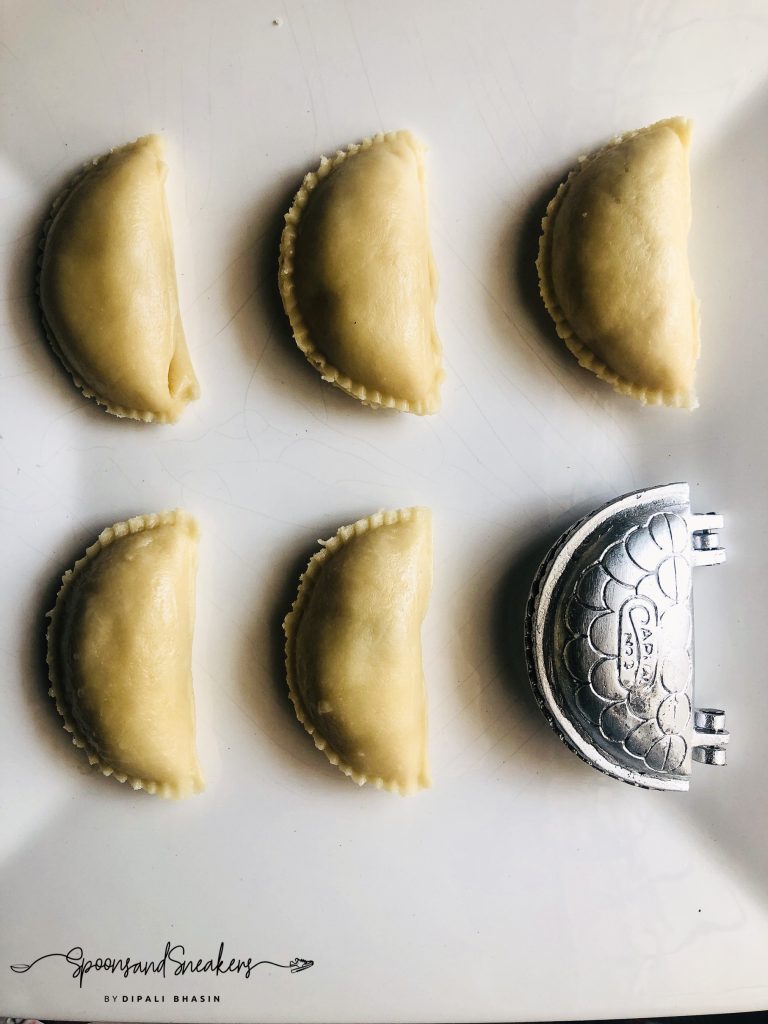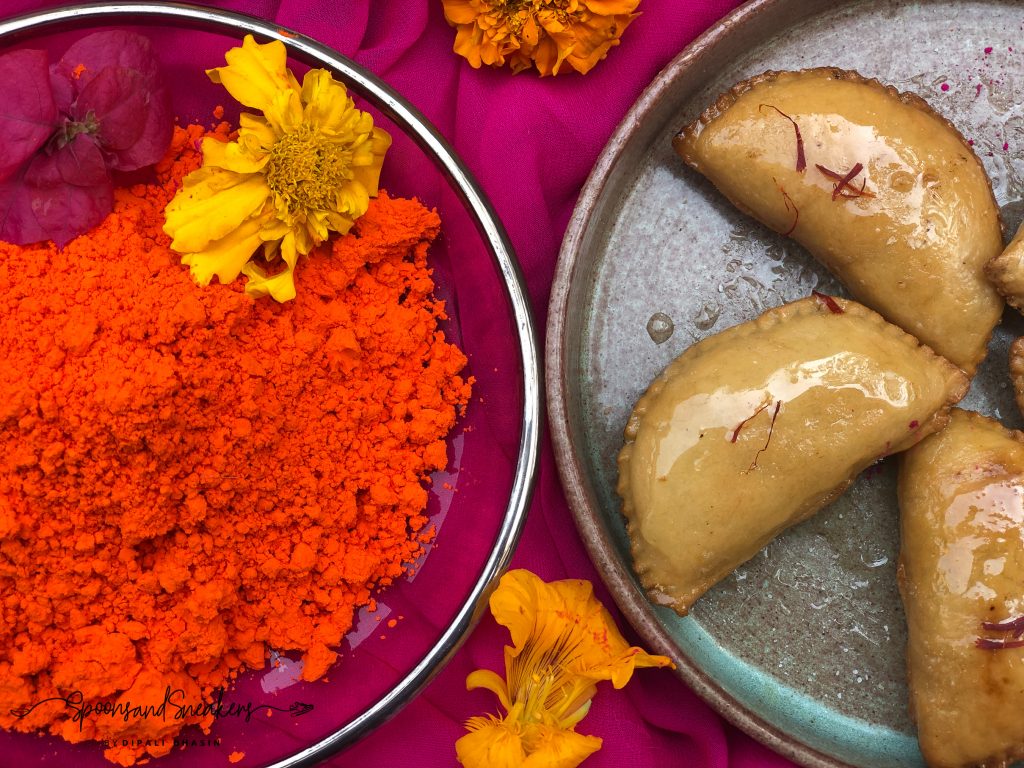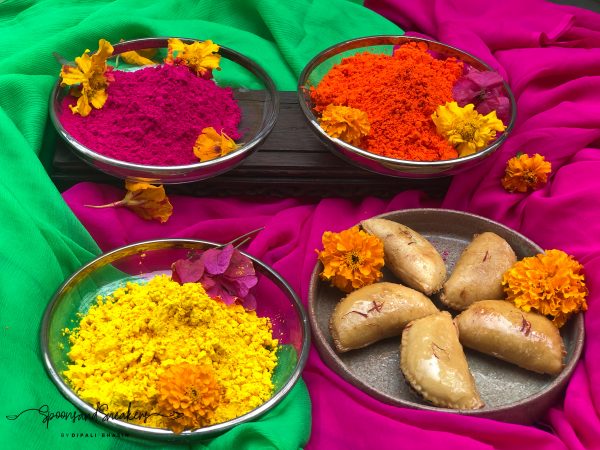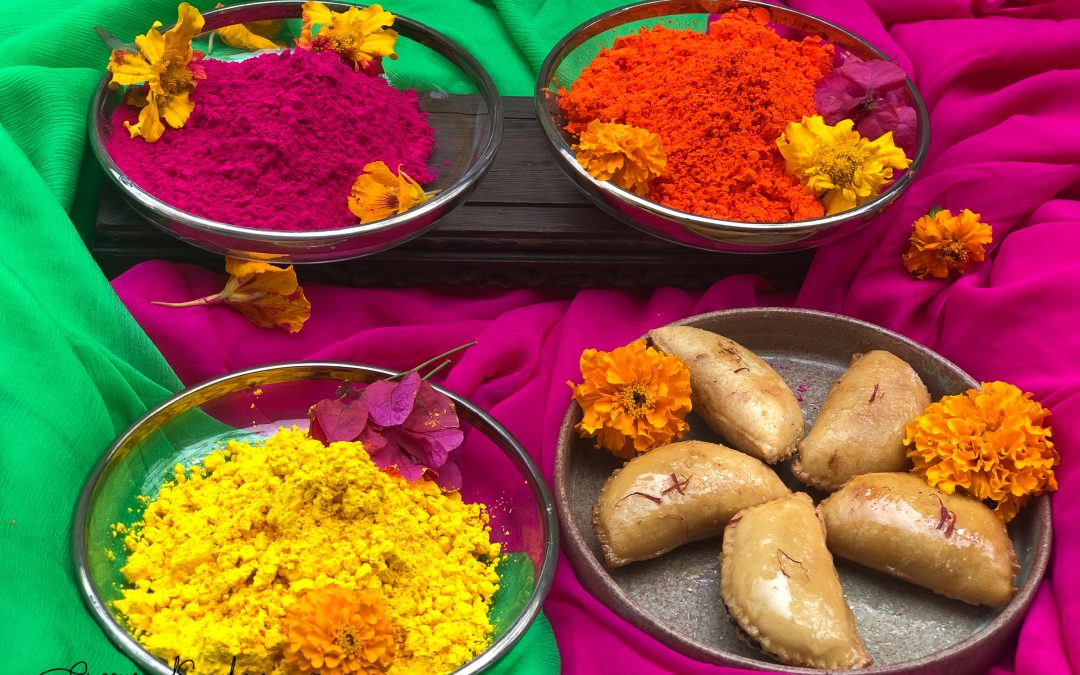The festival of colours, Holi brings to mind the burst of colours in the air, the squealing as water is splashed on someone, the laughter that rings in the air, the Holi anthem “Rang Barse” that is played in every car, house and farmhouse and of course, Gujiya – the syrupy sweet, shaped like a pregnant moon crescent and stuffed with khoya/

While one may find all kinds of mithai in the sweet shops throughout the year, it is the elusive

Despite the newbies in the market, it is the simple

Gujiya is said to have its origin in Bundelkhand. However, there is no evidence of its linkage to the festival of colors. When and how it got connected deeply to Holi is best left to history. No one cares. Also popularly called Pedakiya in Bihar, Karanji in Maharashtra and Ghughra in Gujarat, the sweet has seen seamless crossovers and love from all over. Perhaps it’s the limited availability in the remaining year that makes us binge on it around Holi or nostalgia of a consistent taste in the ever-changing flavors of food today; whatever be the reason we all know that no Holi is complete without its sweet counterpart – the Gujiya and we simply love it.

| Servings |
|
- 2 cup Maida (Refined flour)
- 1/4 cup Ghee
- 1/2 cup lukewarm water
- 2 tbsp Ghee
- 1/3 cup Semolina
- 3/4 cup boora/sugar powder
- 10-12 almonds
- 10-12 cashewnuts
- 10 raisins
- 1/3 cup grated coconut powder
- 1/2 cup khoya
- 1 tsp Cardamom powder
Ingredients
For the shell
For the filling
|

|
- Mix the ghee with the maida in a bowl. Rub well so that the ghee blends well with the flour. Use less than half a cup of lukewarm water to knead the flour into a stiff dough. It should be as tight as a puri.
- Cover the dough with a wet cloth and set aside to rest for 25 minutes.
- For the filling, add ghee to a pan and place on medium heat.
- Add the semolina and saute till light brown in colour. Put in a separate bowl.
- In the same pan saute the dry fruits for a minute. Set aside.
- Dry roast the grated coconut powder for half a minute.
- Crumble khoya with your hands or grate it. Put in the pan and saute till brown in colour.
- Mix the bhoora, khoya, grated coconut, semolina together and use it as a filling.
- Once the dough has rested divide it into about 20 balls. Take a mould. Apply ghee to the insides. Take a ball and roll it out so that it is slightly larger than the open mould.
- Place the rolled out dough inside the mould and add about 2 tsp filling into it.
- Take some water in a bowl. Wet a finger and apply the water to the rims of the dough.
- Close the mould tightly. The excess dough on the outside mould must be trimmed off. Use the same method for the others.
- In a kadai take ghee/ refined oil for frying. Once hot, lower the flame to medium and add the gujiyas. Keep check and turn when one side is golden brown. Lift off the kadai and drain on absorbent paper.
- For the syrup, add the water and sugar and put on heat till it reaches a one thread consistency.
- Dip the fried gujiyas in it. Once nicely coated, take it out. Serve them all on a plate with garnishings of slivered almonds, pistachios or saffron strands.



Thanks for sharing
Thanks for the recipe 🙂
You are welcome. Do make it.
Superb! Lovely read.
Thank you for your feedback, Anshu. I appreciate it.
I miss this so much.
Thanks for sharing the recipe.. Looks. So easy to make…. Definitely will try out this recipe
It is fairly simple. Do let me know once you make it.
Gujiya and Holi are synonymous with each other. This enticing typically Indian sweet is a personal favourite, especially the ones with lots of Khoya filling. It is amazing at the different variants that are made across the country.
Gujiya and Holi are like conjoined twins. One is unfathomable without the other. Its perfectly flaky exterior coated with a sheer coat of sugar syrup and lots of mawa inside, makes it a perfect Indian sweet, hence the popularity all over the country.
How can I even imagine Holi without the soft ,glossy ,syrup coated Gujhias ! I personally like the the ones with hand rolled edges because they are so soft and chewy after dipping in sugar syrup but of course the cast helps in cutting down the labour , as my family eats them in dozens !
I love the hand rolled ones too, more because of nostalgia than anything else. But these casts make it easier for people who may be hesitant about making it due to this step.
Gunjia is one sweet which always reminds me of Holi. Thanks for sharing the recipe
I hope you try it at home too.
I never liked gujiyas until this Holi, I have been fully converted! I would definitely love to try to make these at home.
Thank you for the recipe , will try out
So glad to hear that. Holi is incomplete without Gujiya.
With Diwali around the corner, I’m hoping to try out this recipe. Thank you for sharing.